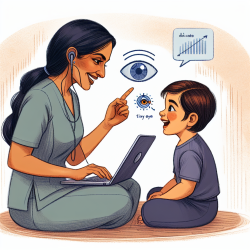Introduction
In the realm of speech-language pathology, understanding how different auditory environments affect speech recognition is crucial for developing effective therapeutic interventions. A recent study titled Do Age and Linguistic Status Alter the Effect of Sound Source Diffuseness on Speech Recognition in Noise? provides valuable insights into how sound source diffuseness impacts speech recognition across different age groups and linguistic backgrounds.
Key Findings
The study investigates how diffuseness of sound sources affects speech recognition in noise, focusing on three groups: young adults with English as a first language (Young-EFLs), older adults with English as a first language (Old-EFLs), and young adults with English as a second language (Young-ESLs). The findings reveal that:
- Speech recognition is better when the target speech is compact and the masker is diffuse, especially in noise conditions.
- Young-ESLs show less benefit from timbre differences when the masker is babble or speech, compared to Young-EFLs and Old-EFLs.
- Older adults generally require more favorable signal-to-noise ratios (SNRs) for effective speech recognition.
Implications for Practitioners
For practitioners, these findings highlight the importance of considering sound source diffuseness when designing auditory interventions. Here are some practical applications:
- Tailored Amplification Systems: Use compact sound sources for target speech and diffuse sources for background noise to improve speech recognition in noisy environments.
- Focus on Linguistic Experience: Be aware that non-native speakers might require additional support to manage informational masking in complex auditory settings.
- Age-Specific Strategies: Design interventions that account for the increased SNR needs of older adults.
Encouraging Further Research
While this study provides significant insights, it also opens avenues for further research. Practitioners are encouraged to explore:
- The role of attentional resources in processing timbre differences, especially in non-native speakers.
- The potential benefits of incorporating listening effort measurements in therapeutic settings.
By integrating these findings into practice, speech-language pathologists can enhance the effectiveness of their interventions, leading to better outcomes for clients in diverse auditory environments.
To read the original research paper, please follow this link: Do Age and Linguistic Status Alter the Effect of Sound Source Diffuseness on Speech Recognition in Noise?










